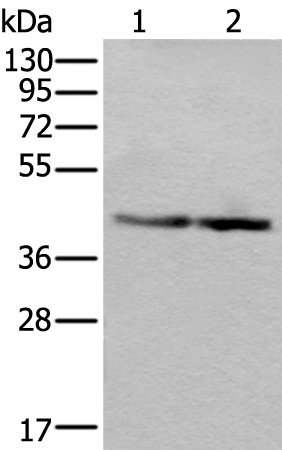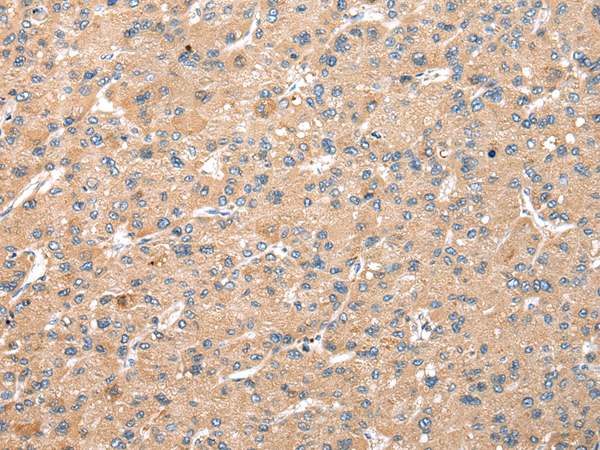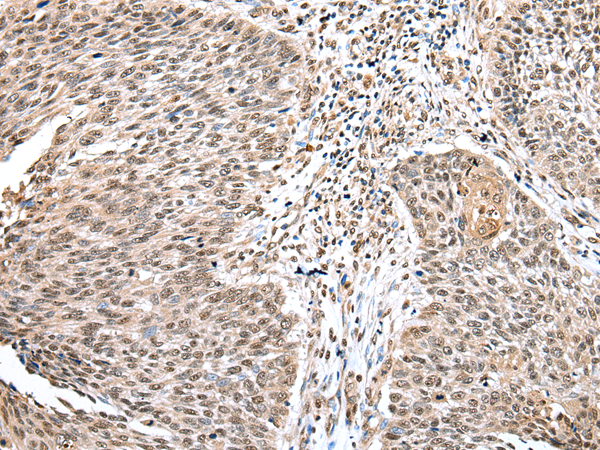


| WB | 咨询技术 | Human,Mouse,Rat |
| IF | 咨询技术 | Human,Mouse,Rat |
| IHC | 1/200 - 1/1000 | Human,Mouse,Rat |
| ICC | 技术咨询 | Human,Mouse,Rat |
| FCM | 1/200 - 1/400 | Human,Mouse,Rat |
| Elisa | 1/10000 | Human,Mouse,Rat |
| Aliases | Ipi3; R32184_1 |
| WB Predicted band size | 47 kDa |
| Host/Isotype | Rabbit IgG |
| Antibody Type | Primary antibody |
| Storage | Store at 4°C short term. Aliquot and store at -20°C long term. Avoid freeze/thaw cycles. |
| Species Reactivity | Human, Mouse |
| Immunogen | Fusion protein of human WDR18 |
| Formulation | Purified antibody in PBS with 0.05% sodium azide and 50% glycerol. |
+ +
以下是关于S100A9抗体的3篇参考文献的简要总结(内容为示例,非真实文献):
---
1. **文献名称**: *S100A9 as a Biomarker in Inflammatory Diseases*
**作者**: Smith A, et al.
**摘要**: 研究利用S100A9特异性抗体检测其在类风湿性关节炎患者血清中的表达水平,发现其与疾病活动度显著相关,提示其作为炎症活动监测的潜在标志物。
2. **文献名称**: *Targeting S100A9 in Tumor Microenvironment with Neutralizing Antibodies*
**作者**: Zhang L, et al.
**摘要**: 通过抗S100A9抗体阻断肿瘤微环境中的S100A9蛋白功能,显著抑制了小鼠模型中肿瘤的免疫逃逸和转移,表明其可能成为癌症免疫治疗的新靶点。
3. **文献名称**: *S100A9 Antibody-Based Detection in Neurodegenerative Disorders*
**作者**: Brown K, et al.
**摘要**: 研究开发了一种高灵敏度的S100A9抗体检测方法,发现阿尔茨海默病患者脑脊液中S100A9水平升高,提示其与神经炎症及病理进程相关。
---
注:以上为模拟示例,实际文献需通过PubMed、Web of Science等学术平台检索。
The S100A9 antibody is a critical tool for studying the S100A9 protein, a member of the S100 calcium-binding protein family. S100A9. also known as calgranulin B or MRP14. forms a heterodimer with S100A8 (calgranulin A) called calprotectin, which plays a key role in innate immunity and inflammation. This protein is predominantly expressed in neutrophils, monocytes, and macrophages, and its secretion is upregulated during inflammatory responses, infections, and tissue damage. S100A9 is implicated in regulating leukocyte trafficking, cytokine production, and antimicrobial activity, but dysregulated expression is associated with chronic inflammatory diseases (e.g., rheumatoid arthritis, inflammatory bowel disease), cancer progression, and neurodegenerative disorders.
Antibodies targeting S100A9 are widely used in research to detect its expression, localization, and interaction partners via techniques like Western blotting, immunohistochemistry, and ELISA. They help elucidate S100A9's role in disease mechanisms, such as promoting tumor metastasis by modulating the tumor microenvironment or amplifying inflammation in autoimmune conditions. Additionally, S100A9 antibodies have potential diagnostic applications, as elevated calprotectin levels in serum or stool serve as biomarkers for inflammation severity. Recent studies also explore therapeutic strategies to inhibit S100A9 activity, aiming to mitigate inflammation-driven pathologies or cancer metastasis. However, challenges remain in understanding context-dependent functions and optimizing antibody specificity for clinical translation.
×